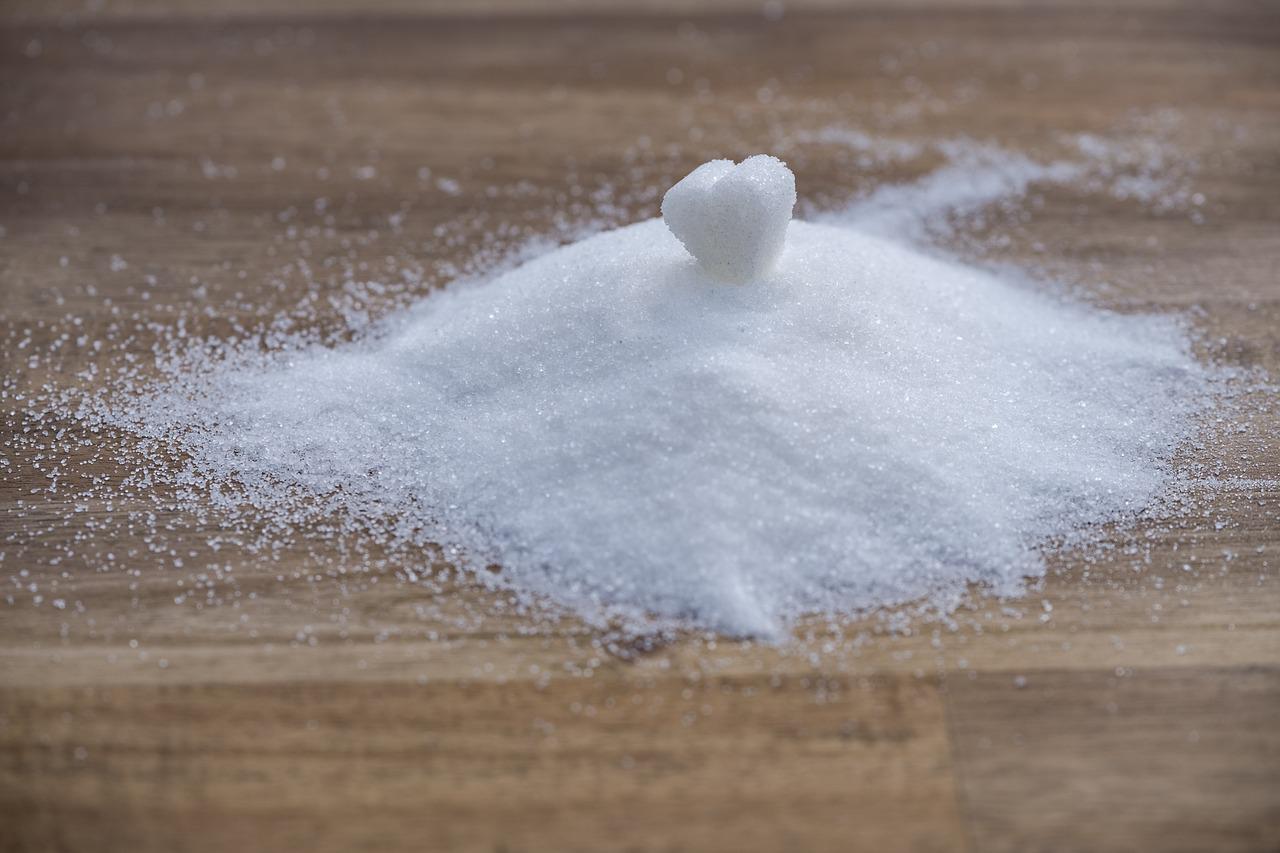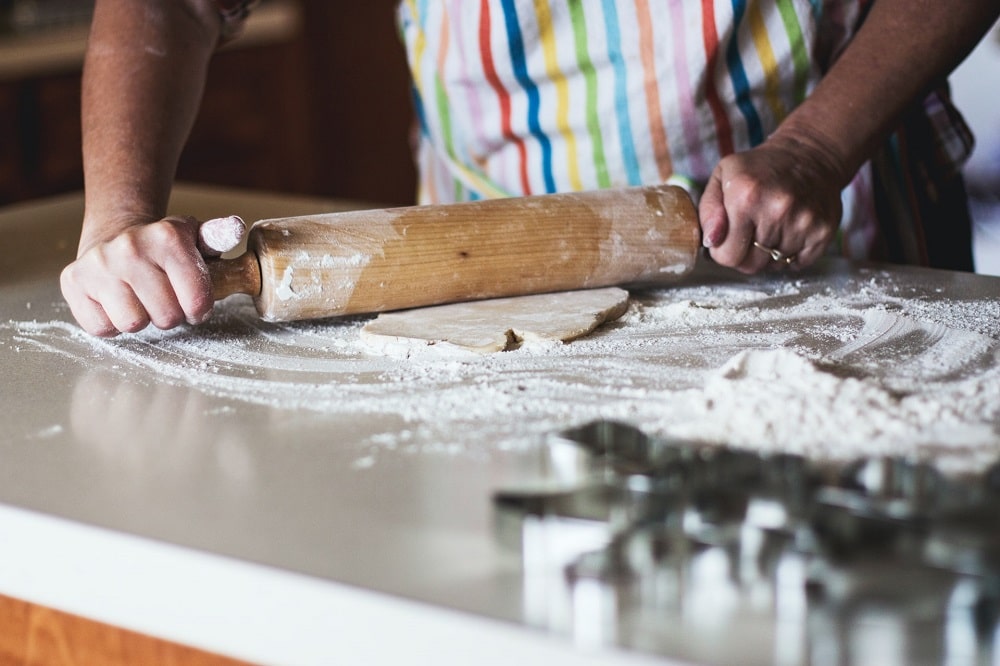Ah, yes, the age-old question, what does sugar do in baking? Most will reply it makes everything sweeter. But did you know that sugar plays a more significant role in baking than just giving cakes and cookies a sweetened taste? Sugar performs several functions to make your baked goods turn out better, thanks to its unique chemical composition.
Understanding what sugar does and how it works will help you become a better baker and make it easier to know when a recipe calls for sugar and what type. So, let’s take a closer look at this fascinating ingredient.
It’s everyone’s favorite ingredient and the most well-known sweetener for baking. What you may not know is that sugar plays an important and complex role in the chemistry of baking.
If you’ve picked up a set of letter cookie cutters to spell out a love note for that special person you bumped into in the baking section of the supermarket, remember it’s what’s inside that counts.
If you run into them again, you’ll at least be able to impress them with your newfound knowledge of sugar in the baking process instead of pretending to read the ingredients on a can of condensed milk while they waited for you to ask for their number.
Everything About Sugar in Baking
Understanding how sugar works in the baking process will get you one step closer to becoming a rockstar in the baking world. First thing’s first, sugar is responsible for texture. Sugar binds to water molecules so that the “L” cut by your letter cookie cutter set doesn’t taste like a dog biscuit. The sugar bonded with water keeps the entire treat nice and moist.
Sugar is also responsible for the shape and firmness of your baked goods, and possibly body shape, but we won’t go there. Proteins and starches pull water from your batter and firm up the product as the baking process happens. Since sugar retains water, it can combat the firmness of the starches. If you put too much sugar in, the product can lose its shape and your “O” will just look like an amoeba.
Sugar also helps leaven your baked good. The crystals cut tiny air pockets into the fats (eggs and other liquid ingredients) which allows the dough to rise higher. Your baking aisle crush will be astonished at your three-dimensional “V.”
Lastly, sugar adds that delectable crunch to your baked products. As the oven heats your dough, moisture evaporates allowing the surface sugars to recrystallize. This creates the perfect outer shape and texture. When they bite into the “E,” they’ll experience a nice outer crunch before reaching the moist and tender center.
At JB Cookie Cutters, we have all the letters in the alphabet in multiple cookie cutter sets so that you can express your love in your own words. Getting that sugar balance right is up to you!
Sugar – What is It?
Sugar is made up of molecules called Sucrose, derived from plants. While most sugar comes from sugar cane, it is also extracted from sugar beets. These two forms of sugar molecules are so similar you often can’t tell them apart unless they’re labeled. Either way, they are both ideal sugar for baking.
What is the Function of Sugar in Baking?
While the most apparent purpose of sugar in baking is to add sweetness and flavor, sugar helps in a few other ways too, as we already discussed already in the beginning. So, let’s take a closer look at what these functions are:
Sugary Sweetness
As we have said before, one of the primary uses of sugar in baking is to add a sweet taste to cookies, cakes, and confections. For instance, white sugar granules add a more neutral sweetness, whereas dark brown sugar has a more rounded flavor. Additionally, bakers use sugar to balance out other flavors, such as reducing the sharp lemony tang in lemon meringue pie.
Sugar Adds a Golden Hue
When sugar heats up, it caramelizes. This chemical reaction to heat is what browns baked goods, giving them that delicious golden-brown hue. The more sugar you add to your recipe, the more browning occurs since the sugar reacts with the proteins and starches in the mixture under heat – this is known as the Maillard Reaction. Those baked goods with less sugar will have a light golden color when ready to come out of the oven. In contrast, those with more sugar will take on a richer brown color.
Sugar Locks in the Moisture
Another essential reason we use sugar in baking is that it locks in moisture. Sugar absorbs and holds onto moisture, which in turn keeps your baked goods moist. As a result, items like cupcakes, muffins, or yeasty bread rolls don’t stale as quickly as a baguette or rye bread which has no added sugar.
Sugar Tenderizes Baked Goods
When items bake, gluten development occurs. An excess of gluten can cause cakes and bread to become hard, chewy, and tough, making them not so good to eat. And this is why sugar is essential in baking. Moisture prevents gluten development, and since sugar holds onto moisture, it prevents an over-creation of gluten, keeping baked goods soft, light, and tender.
Sugar Aids in Leavening
Leavening is the process of releasing gases within a dough or batter, giving them a porous structure, leaving the baked goods light and fluffy instead of heavy and stodgy. Sugar acts as an important leavening agent in baking.
Firstly, when bakers cream sugar and butter together when first making a batter, this creaming process adds air pockets into the mixture, ensuring the cake or cookie dough isn’t too dense.
Even when it isn’t creamed into a batter, sugar helps with leavening. Since it holds onto moisture, it creates space for gas expansion in the mixture, ensuring cakes rise beautifully.
Lastly, sugar not only helps baked goods rise but also spread. You will find cookies with minimal sugar tend to hold their original form, while those with more sugar spread out more. So, if you’re looking to use cookie cutters to make cookies in a specific shape, use less sugar.
Sugar is a Great Stabilizer
When beating egg whites to make an egg foam for meringue, you’re only halfway to making this tasty confection. Sugar makes up the integral second half. Firstly, sugar prevents your egg whites from being overbeaten. When we beat an egg white, the egg protein stretches to form strands around air bubbles, essentially creating the foam. Adding sugar to the egg whites slows the formation of foam, allowing for perfectly textured meringue.
Sugar plays another essential role in meringue – it prevents the foam from collapsing and losing shape. The sugar dissolves when absorbed into the foam bubbles, creating a syrupy residue that protects the bubbles, ensuring the meringue keeps its shape.
Often, bakers use powdered sugar for making meringues. However, Italian meringues that require heating on a stove often call for superfine sugar, also known as castor sugar.
Sugar is Great for Texture
When asking why is sugar used in baking, you’ll find another reason is texture. In addition to ensuring a light and fluffy cake that isn’t tough or chewy, sugar also adds texture. The type of sugar you use will determine the consistency of the batter. For this reason, bakers often use superfine sugar or powdered sugar in cake batter and frosting as no one likes a gritty cake. But, the sugar we add to cookies is often granulated for extra crunch.
So, now you have all the info behind what a handy ingredient sugar is; when others ask what is the purpose of sugar in baking or what does sugar do in a cake, you’ll have all the answers. And you can tell them that the process of adding sugar is essential to creating otherwordly baked goods.





Nancy
Could you PLEASE give us your favorite alphabet cookie recipe for use with your cutters???